How to grow garlic: Delicious, lucky and superbly easy to cultivate
Mark Diacono teaches us how to grow garlic.
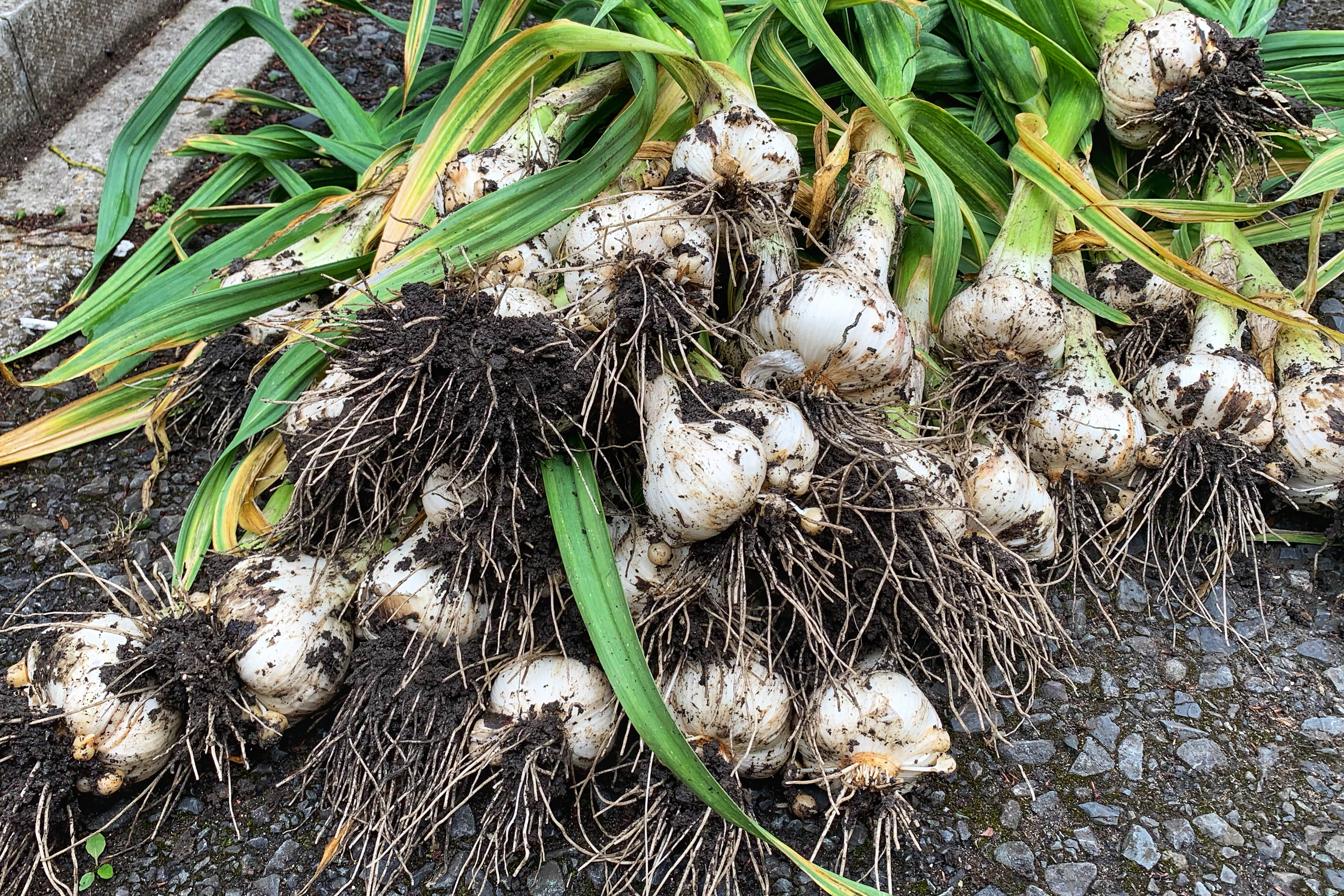

If you believe the myths, garlic is so much more than a delicious food. Legend has it that those who eat garlic are bestowed with luck, protection and good fortune; explorers in Asia supposedly ate garlic before walking through mountain passes to ward off tigers and, of course, it is well known as a repellent of Dracula. The fact that I have had no bother from either wild cats or vampires in my garden would appear to support this.
The primary compound that we (and, presumably, vampires) experience in garlic is allicin. Strangely, the plant’s defence against animals tempted to have an inquisitive nibble is exactly what turns many of us ravenous in an instant when we smell it cooking. It is also responsible for garlic being antibacterial, blood-thinning, cholesterol-lowering, and detoxifying.
'It would be criminal not to grow it'
On the face of it, there seem to be plenty of perfectly good reasons not to bother growing your own garlic. It’s relatively cheap to buy, for example, and it keeps well. That said, the intensity and complexity of homegrown garlic is so different from shop-bought bulbs. Growing your own is not only easy, but it also gives you the opportunity of using your garlic ‘green’. Green garlic is a sweeter, gentler version of dried garlic, enhancing other ingredients without being quite so pronounced.
It would be criminal not to grow it, I think, as the early-summer harvests that coincide with its readiness – everything from lamb to broad beans, new potatoes to peas – make superb partners.
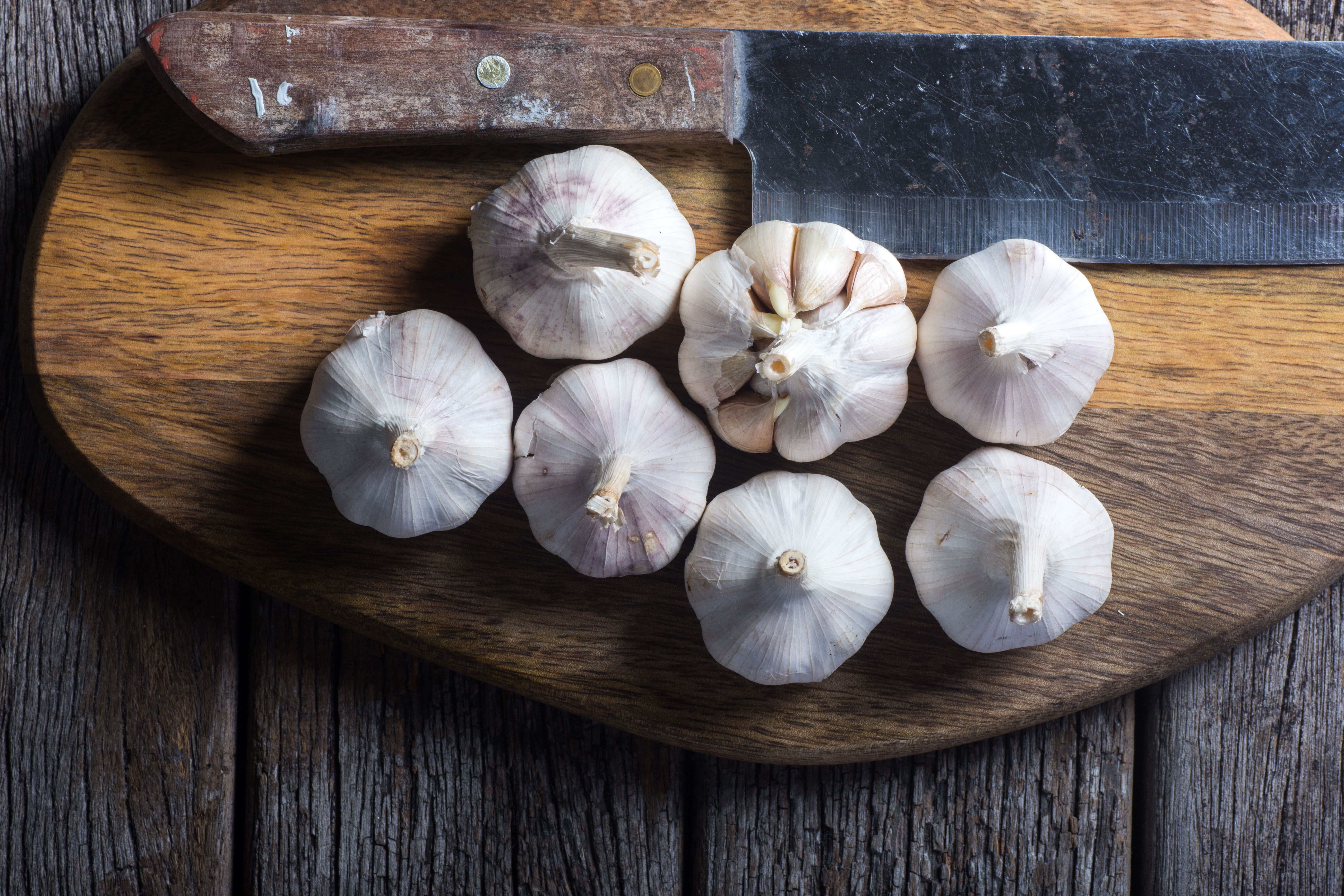
Although it may not be obvious when buying bulbs in the shops, garlic comes in two main types: hardneck and softneck. Hard-necks produce flowers readily and tend to form large bulbs of strongly flavoured cloves that keep only until midwinter. Softnecks are often milder, producing bulbs with a larger number of smaller cloves, that can be stored well into winter and even into spring when harvested from later sowings.
Most varieties of garlic for growing at home are of fine flavour (another upside), so it’s important to focus on reliability.
I am growing two dependable, soft-necked French varieties this year – Germidour and Messidor. Both mature early, from June, with Germidour having a rich, mild taste, and Messidor being more strongly flavoured. It also dries well in autumn and stores for months.
Sign up for the Country Life Newsletter
Exquisite houses, the beauty of Nature, and how to get the most from your life, straight to your inbox.
'Wild garlic may well be the most commonly foraged plant in the UK, with good reason'
Both are reliable, but Messidor has particularly strong root growth, which makes it a great choice for cold areas and difficult growing conditions. I always grow Elephant garlic, too. Although botanically closer to a leek than true garlic, this monster – with bulbs usually 10cm (4in) across – has a sweet, generous garlic flavour and is superb roasted whole.
There are alternative sources of that wonderful garlic flavour, too. After blackberries and elderflower, wild garlic may well be the most commonly foraged plant in the UK, with good reason. Its leaves have a full, yet mild flavour and cutting them does little to slow the plants’ vigour. Of the numerous other alliums that carry that garlic taste, my favourites are garlic chives and Tulbaghia – also known as society garlic. The latter flowers prolifically from April until October, with these pink/purple bell flowers the only edible part of the plant – and very delicious they are too.
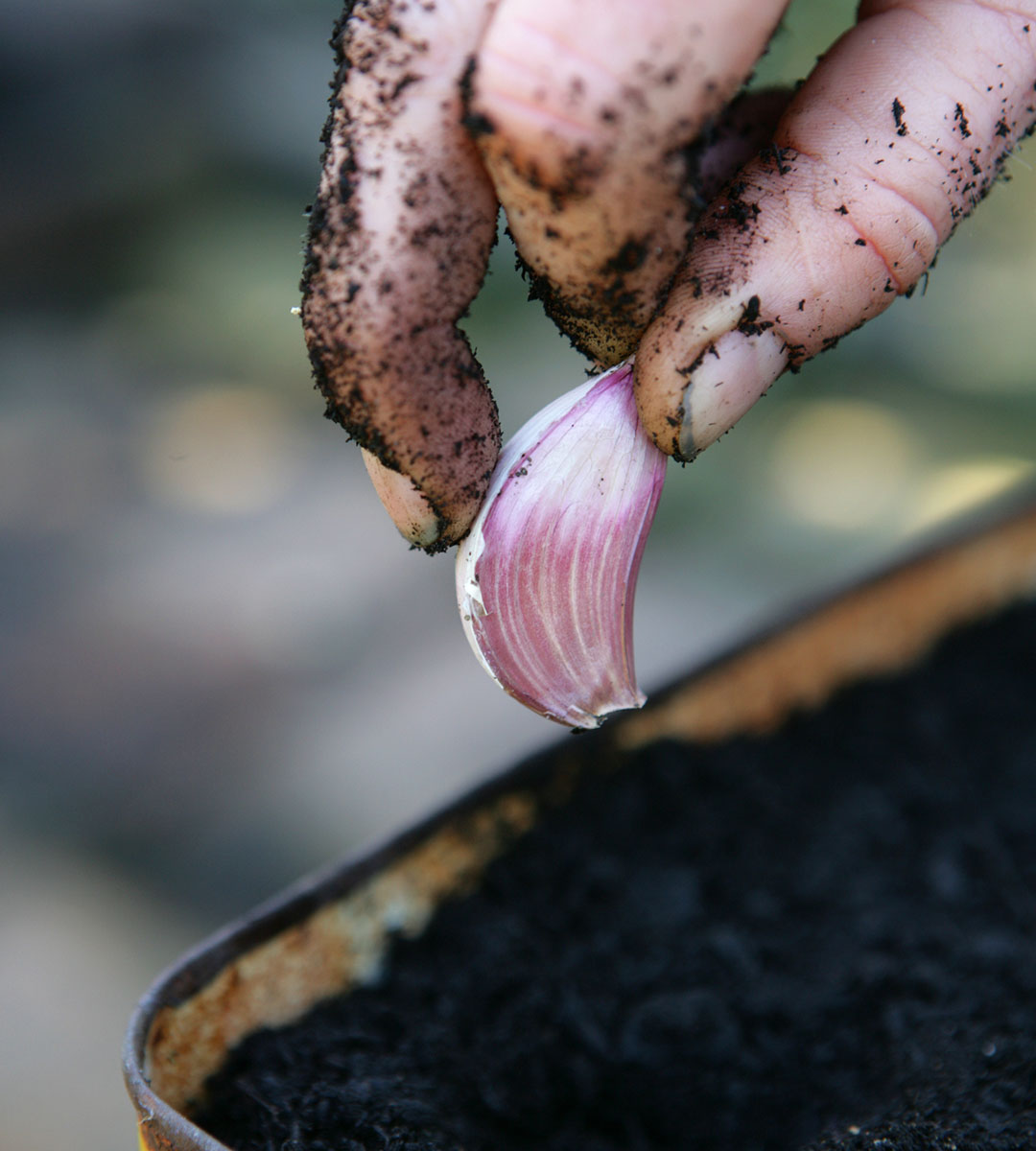
Sourcing Ensure the bulbs you buy are certified virus free. Don’t try growing from cloves you’ve bought in the shops, as most are grown overseas and are prone to viruses.
Mark's top tips to successfully grow garlic
Position: Sunny, in a well-drained soil.
Growing: If your garlic for sowing comes as a bulb, separate it into cloves, discarding the tiny ones at the centre. Sow 7cm (3in) deep (a little more for Elephant) with the flat end downwards, allowing 15cm (6in) between them, and with rows a minimum of 20cm (8in) apart. Sow from now until March. Water during dry spells until early summer, but no later, as this can lead to rot.
Potential problems: If your garlic runs to flower, cut off the stem to concentrate the plant’s energies towards developing a good-sized bulb. Rust can be a problem; grow garlic in a new spot each year to minimise the risk.
Harvest: Expect a summer harvest. Early-sown cloves will produce larger, slightly earlier bulbs. Lift bulbs from June to use immediately as green garlic or wait until any leaves turn yellow. Once lifted, allow the bulbs to dry in the sun for a couple of days, then store indoors somewhere cool. Dried garlic will last for four months, often longer. 
Mark Diacono grows edibles, both usual and unusual, at Otter Farm in Devon, www.otterfarm.co.uk.
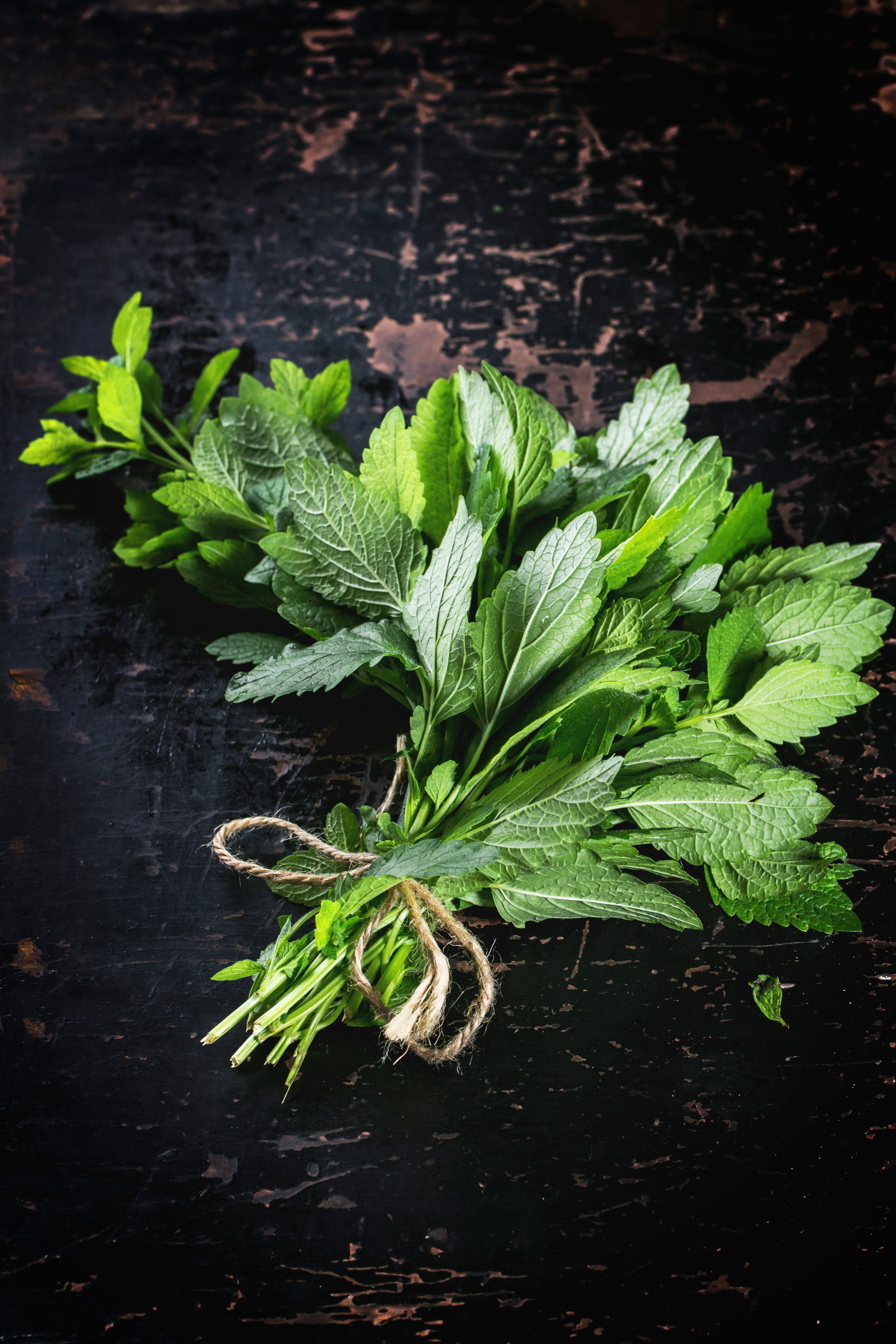
Credit: Alamy
Cultivating mint: What varietals to plant, where to plant them and whether they should be used for jelly or juleps
Mark Diacono explains why mint is for even the incurably incompetent horticultural enthusiast.
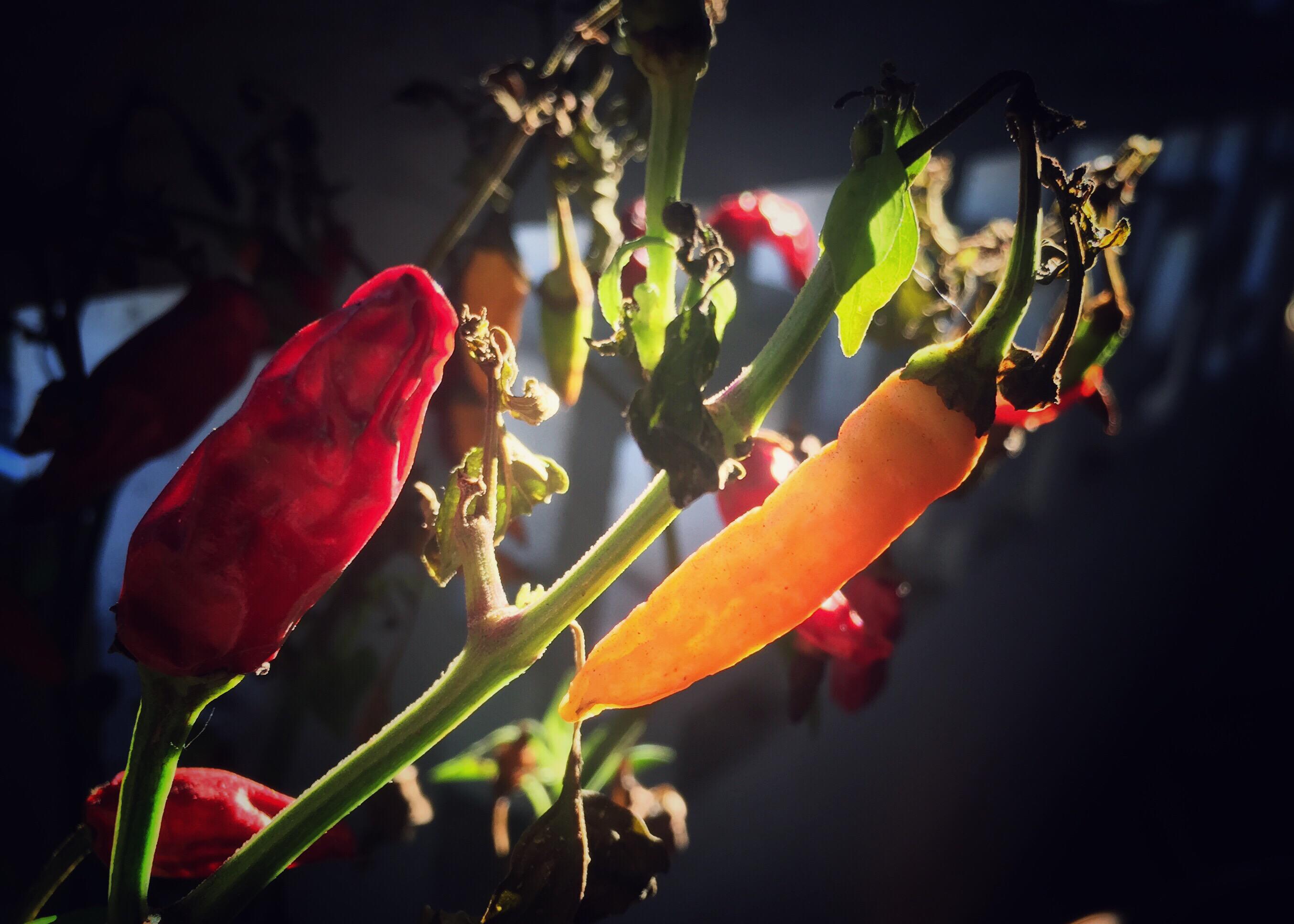
How to grow chillies in Britain: What to plant, where to plant them and how to make them grow
We associate chillies with hot climates, but they can be grown on these shores — Mark Diacono explains how.
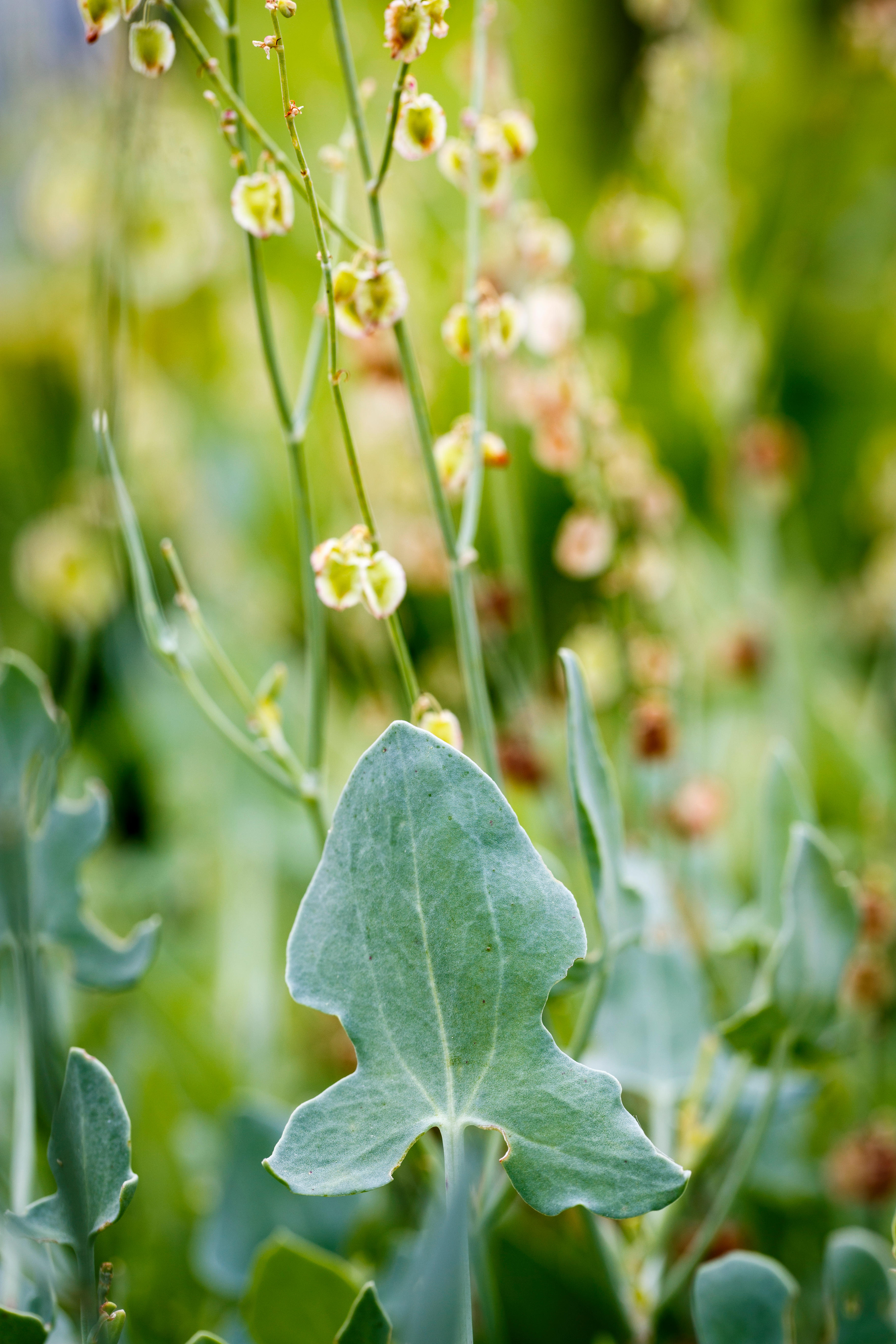
The delicious salad leaves to try in your garden that keep on giving with ‘cut and grow’
Pulling up entire salad plants seems like madness once you've moved on to 'cut and grow again' as Mark Diacono
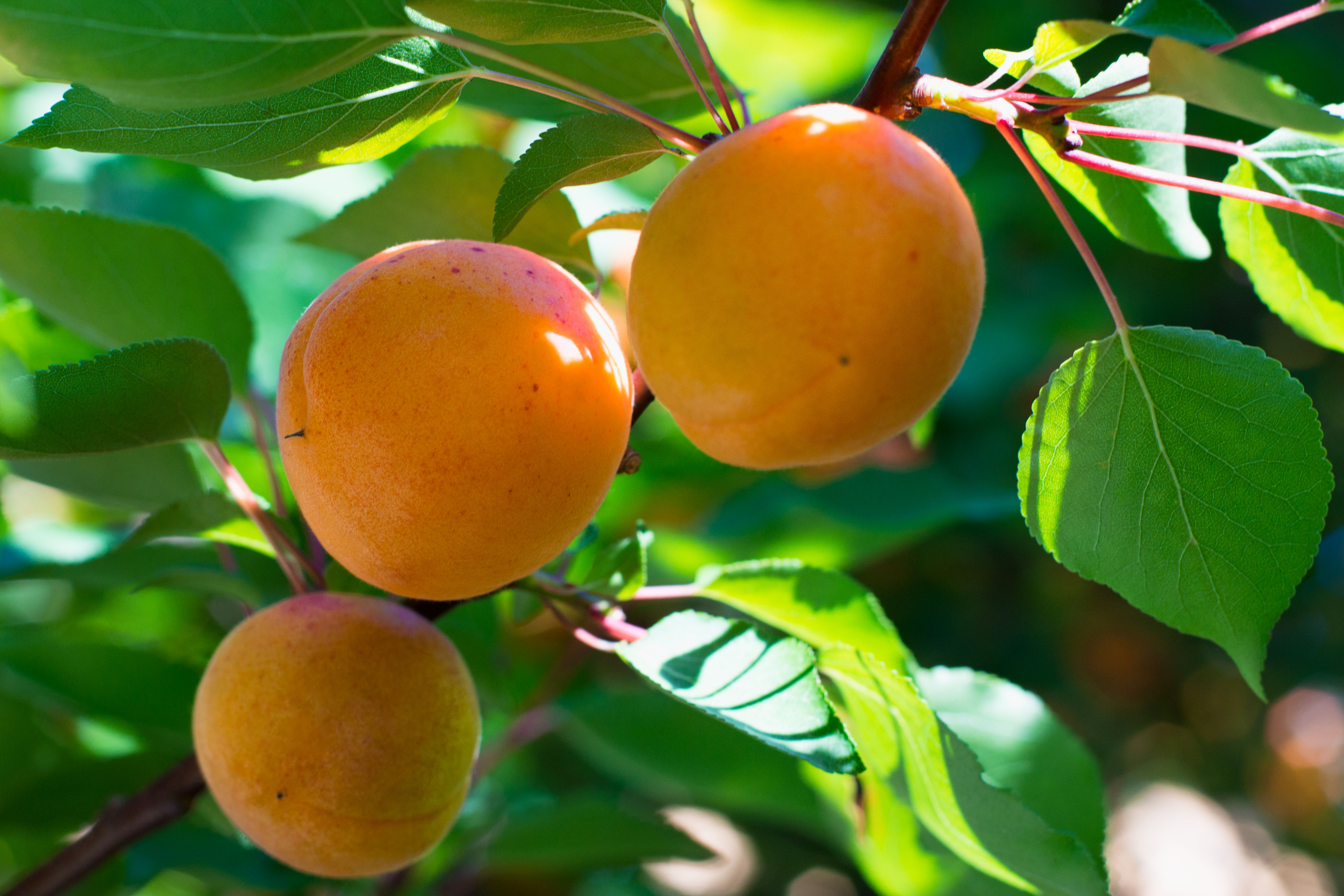
Credit: Alamy
How to grow your own apricots and enjoy 'deep, honeyed richness' far beyond what you'll find in the shops
Mark Diacono hasn't eaten a fresh apricot from a supermarket in years — here are his tips on how to grow
Mark is lucky enough to spend most of his time eating, growing, writing and talking about food. He has written fourteen award-winning books, including A Year at Otter Farm and A Taste of the Unexpected (both won Food Book of the Year, and Garden Book of the Year). Known for growing everything from Szechuan pepper to pecans to Asian pears, Mark's refreshing approach to growing and eating has done much to inspire a new generation to grow some of what they eat. He was involved in the early days of River Cottage, appearing in the TV series, and writing four River Cottage books. Mark writes to a global audience on his best-selling Substack: Mark Diacono’s Abundance.
-
 Two quick and easy seasonal asparagus recipes to try this Easter Weekend
Two quick and easy seasonal asparagus recipes to try this Easter WeekendAsparagus has royal roots — it was once a favourite of Madame de Pompadour.
By Melanie Johnson
-
 Sip tea and laugh at your neighbours in this seaside Norfolk home with a watchtower
Sip tea and laugh at your neighbours in this seaside Norfolk home with a watchtowerOn Cliff Hill in Gorleston, one home is taller than all the others. It could be yours.
By James Fisher